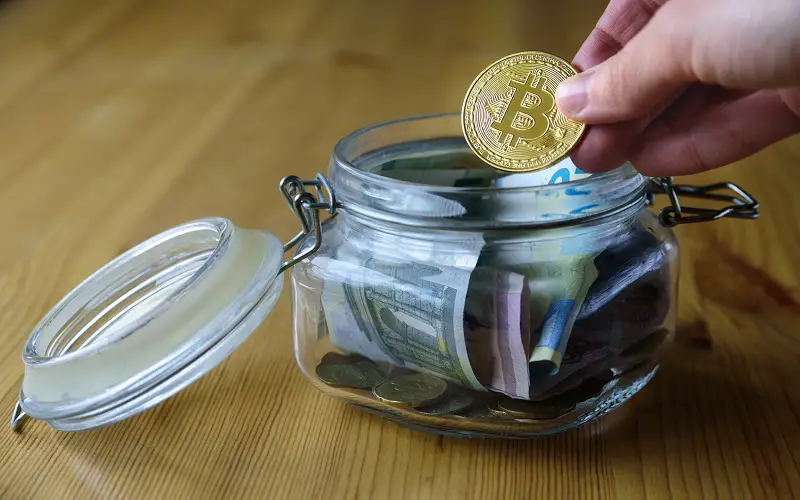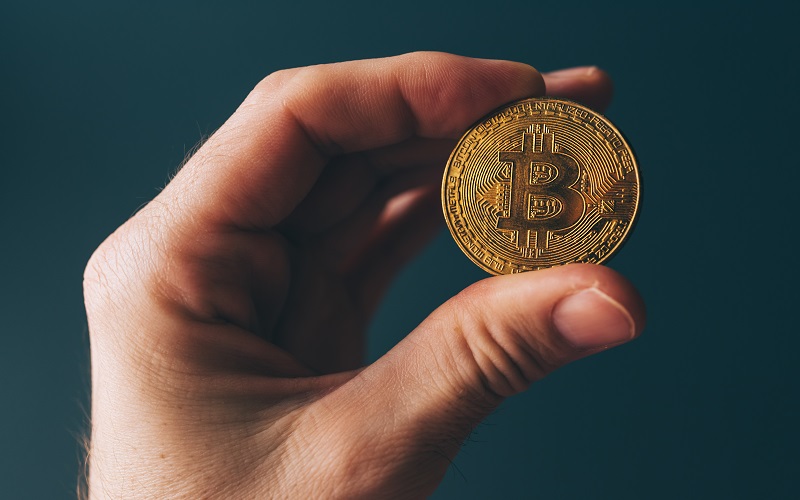Decentralized exchanges or DEXs are cryptocurrency marketplaces that facilitate peer-to-peer transactions. These exchanges eliminate the need for authorities when it comes to authorizing and overseeing trading that takes place in a particular cryptocurrency trading platform. Thus, crypto traders transact directly with one another without having to hand over their funds’ management to a custodian or an intermediary. As such, transactions performed on decentralized exchanges are facilitated using self-executing agreements between crypto traders.
These agreements are written in codes known as smart contracts. DEXs are non-custodial, meaning that users take full control of the private keys of their wallets. Notably, a private key consists of a kind of enhanced encryption, which helps traders to access their cryptocurrencies. A user just needs to log in to their DEX account and they can access their cryptocurrency balance immediately. In other words, they are not required to provide personal details like names or addresses to an intermediary. This is perfect for people who greatly value their privacy.
Evolution of DEXs
With the rise of cryptocurrencies, the concept of decentralized exchanges has gained widespread acceptance. These platforms do not store users’ funds or assets, but rather, distribute them among users, who then can use them to transact with ease. This type of technology is relatively new, but it already has many advantages. For instance, consumers are not obliged to give up custody of their money, and they can easily access the same information about their funds as other investors.
Decentralized exchanges are a formidable competitor to centralized crypto exchanges. The interesting thing about decentralized exchanges is the rapid growth they have experienced in such a short time. The earliest stage of decentralized exchange development was the hashed-time-locked contracts or HTLCs. These provided a basic cryptographic escrow system that allows for trustless, on-chain exchange and transactions among traders. LocalBitcoins and Bisq are two of the most promising decentralized exchanges that are based on HTLCs. LocalBitcoins was launched in 2012 and Bisq in 2014.
The next evolution of DEXs came with the introduction of the Ethereum DEXs. The new generation of exchanges was powered by Ethereum smart contracts, which brought many improvements to the HTLC-based ones. DEXs are a key element of the crypto world, allowing trading that allows for significant increases in crypto volume. Between June 2020 and June 2021, almost $600 billion in trade volume was facilitated by decentralized exchanges.
10 Popular Decentralized Cryptocurrency Exchanges
1. Kyber Network
2. 1inch Exchange
3. CyberFi
4. Pancakeswap
5. Linear Finance
6. Injective Protocol
7. Matrixswap
8. SushiSwap
9. Eidoo
10. Onomy Protocol
How Decentralized Exchanges Work
Decentralized cryptocurrency trading companies operate on top of blockchain networks and function through smart contracts. In other words, crypto traders on the blockchain interact with these smart contracts to use decentralized exchanges. Users of DEXs have full control of their money and can access it whenever they want. So, every trader on a DEX is charged a transaction fee and a trading fee. It is through these fees that these companies run their businesses.
More and more investors are finding decentralized exchanges more reliable than their centralized counterparts. Their uptime is extremely high, as nodes are ready to provide their services at any moment. As a result, they can guarantee that trade settlement and order matching will continue. Users can run their own nodes and transfer their assets to wallets. Decentralized exchanges exist in three main types: Order books, automated market makers, and DEX aggregators. All these types enable members to trade with each other directly using smart contracts.
Order Books
Order book decentralized trading companies gather the records that are open to buy and sell assets for particular pair of assets. Buy order in this exchange is used to indicate that one is willing to bid for or buy an asset at a particular price. On the other hand, a sell order signifies that a trader is ready to either sell a particular asset that is being considered or ask its price. Thus, the depth of order books is determined by the variation between these prices. Subsequently, they also influence the exchange market prices.
Order book exchanges come in two types: off-chain and on-chain. Usually, exchanges that use order books hold information about the open orders while funds remain in the users’ wallets. Crypto traders on these DEXs may be allowed to leverage their positions. This happens by using money that is borrowed from funders on their platform. While a trader’s earning potential is increased through leveraged trading, the risk of liquidation is also increased. This happens because of the enhanced position size with borrowed funds and this money has to be repaid even when a trader loses his or her bet.
To provide traders with the advantages of centralized exchanges, DEX platforms that keep their order books off the Blockchain only settle trades on it. Off-chain order books help exchanges reduce costs and speed up trade executions at the desired prices. These exchanges offer leveraged trading options and allow users to lend funds to other traders. Funds that are loaned earn interest over time. They are protected by the liquidation mechanism of the exchange, which ensures that lenders get paid even when traders lose their bets.
It is worth noting that order book DEXs can have liquidity problems. Because they compete with centralized exchanges and pay extra fees for transacting on-chain transactions, traders tend to stick to centralized platforms. Although DEXs that have off-chain order books can reduce these costs, smart contract-related risks are created by the need to deposit funds into them.
Automated Market Makers
To solve the liquidity problem, an automated market maker (AMM), which relies on smart contract technology, was developed. These exchanges were partly inspired by a paper on decentralized exchanges written by VitalikButerin, the Ethereum co-founder. It describes how contracts holding tokens can be used to execute trades on the blockchain. These automated market makers are based on blockchain-based services, which provide information from exchanges and other platforms to determine the price of traded assets. They are called blockchain oracles. These smart contracts, which are used in decentralized exchanges, use pre-funded asset pools known as liquidity pools to match buy and sell orders.
Other users fund the pools and are entitled to the transaction fees charged by the protocol for the execution of trades on the pair. To earn interest on their cryptocurrency holdings they must deposit the equivalent amount of each asset in the trading pairs. This is known as liquidity mining. The smart contract behind the pool will reject any attempt to deposit more than one asset. Liquidity pools allow traders to execute orders and earn interest in an anonymous and trustless manner. The ranking of these exchanges is often based on the amount of money that is locked in their smart contracts known as total value locked. This is because the AMM model can have a drawback when there isn’t enough liquidity slippage.
Slippage is when there is a shortage of liquidity on the platform. This causes the buyer to pay above-market prices for their order. Larger orders will experience higher slippage. Wealthy traders may avoid these platforms due to a lack of liquidity. Large orders will likely suffer from slippage without having deep liquidity. Other risks for liquidity providers include impermanent losses, which can be caused by depositing two assets to a trading pair. Trades on the exchange may lower the liquidity pool’s amount if one of these assets becomes more volatile than the other.
Liquidity providers can suffer an impermanent loss if the asset’s volatility rises and the liquidity providers have less. Because the asset’s price can rise again, and trades on the stock exchange can balance out the pair’s ratio, the loss is temporary. The pair’s ratio is the percentage of each asset that is held in the liquidity pool. Trading fees can also be used to make up for the lost assets.
Decentralized Exchange Aggregators
To solve liquidity problems, DEX aggregators employ a variety of protocols and mechanisms. These platforms aggregate liquidity from multiple decentralized exchanges to reduce slippage, optimize swap fees and token prices, and offer traders the highest price in the shortest time.
Other important goals of decentralized exchange aggregators are to protect users from the pricing effect and reduce the chance of failed transactions. DEX aggregators may also leverage liquidity from centralized platforms in order to offer users a better experience. However, they are non-custodial and can leverage integration with specific central exchanges.
How Decentralized Exchanges Are Used
A decentralized exchange doesn’t require you to sign up. You don’t even require an email address in order to interact with them. Instead, traders require a wallet that is compatible with smart contracts on the DEX. Anybody with an internet connection and a smartphone can access the financial services provided by decentralized exchanges. The first step in using DEXs is to choose the network that the user would like to use. Each trade will result in a transaction fee. Next, choose a wallet that is compatible with the chosen network and fund it using its native token. A native token is a token that can be used to pay transaction fees within a network.
Users access funds in their browsers directly through wallet extensions. This mechanism makes it quick and easy to interact with as well as use decentralized apps (DApps) like DEXs. They can be installed just like any other extension. Users will need to import an existing wallet using a seed phrase or private key or create a brand new one. Password protection further protects your security. These wallets might also include mobile apps so that traders can access Defi protocols while on the move. This is because they are fitted with built-in browsers that facilitate interaction with smart contract networks. By importing funds from one device to another, users can sync wallets.
Once you have chosen a wallet, you will need to fund it with tokens that are used to pay transaction fees on the selected network. These tokens must be purchased on centralized exchanges. They can be easily identified by the ticker symbol, such as ETH for Ethereum. Users can withdraw the tokens to their wallets after purchasing them. It is important to not transfer funds to the wrong network. Users must ensure that they withdraw funds to the correct network. Users can connect to a funded wallet by clicking the “Connect Wallet” button in the upper corner of the DEXs website.

Advantages of using Decentralized Exchanges
Decentralized exchange trading can be costly, particularly if there are high network transaction fees when trades take place. However, DEX platforms offer many benefits.
1. Anonymous exchange
Users can exchange one digital currency for another anonymously on DEXs. Users do not have to go through Know Your Customer (KYC) as a standard identification process, which is the case for centralized exchanges. KYC processes collect personal information about traders, including their legal name and a photo of their government-issued ID document. But decentralized exchanges are popular because they attract many people who don’t want to be identified.
2. Reduced counterparty risks
Counterparty risk is when one party in a transaction fails to fulfill its obligations or doesn’t perform its part. This risk is eliminated because decentralized exchanges are free from intermediaries and rely on smart contracts. Users can perform a quick web search to determine if smart contracts on the exchange have been audited. They can also make decisions based on other traders’ experiences.
3. Availability of token
Centralized exchanges must vet tokens individually and ensure that they conform to local regulations before listing them. Blockchain-based decentralized exchanges can accept any token that has been created on it. This means that new projects may list on them before they become available on their centralized counterparts.
Although this may allow traders to be in the market as early as possible for projects, it also means that all manner of scams can be listed on DEXs. One scam that is common is the “rug pulling,” which is a typical exit scam. Rug pulls happen when the team behind the project dumps the tokens used for liquidity on these exchanges’ pools when they go up in price. This results in a significant negative effect on trading.
4. Low security risks
Because these exchanges don’t control the funds, experienced cryptocurrency users can reduce their risk of being hacked. Instead, traders keep their funds safe and only use the exchange to interact with them when necessary. Only liquidity providers are at risk if the platform is hacked.
Disadvantages of DEXs
While DEXs provide the above benefits, they have their own share of drawbacks. Here are the most common drawbacks.
1. Traders need to have specific knowledge
You can access DEXs using cryptocurrency wallets that are compatible with smart contracts. Users must not only know how to use these wallets but also understand the security concepts that are involved in keeping their funds safe.
Users need to fund these wallets with appropriate tokens associated with each network. Other funds could get stuck if the native token of a network is not used. The trader will have to pay the fee to move them. Choosing a wallet as well as funding a wallet with the right tokens requires one to have specific knowledge.
Slippage can also pose a challenge even for experienced investors. It is even more difficult when buying tokens with lower liquidity. Slippage tolerances on DEX platforms often have to be adjusted manually for orders. Slippage adjustment can also be complicated and not all users will understand it.
Trading can be dangerous without the right knowledge. There are many things that could go wrong, including withdrawing coins to the wrong network, paying transaction fees that are too high, or losing money permanently.
2. Listings of unvetted tokens
A new token can be listed by anyone on a decentralized exchange. They can also pair it with other coins to provide liquidity. Investors can fall for scams like rug pulls, which make them believe they are purchasing a different token.
These risks are countered by some DEXs asking users to verify that the smart contracts of the tokens they want to purchase have been verified. This solution is great for those with previous knowledge, but it can also be used by novice users.
Traders can read about a token on its whitepaper to understand it as much as possible. One can also join its community on social media, and look for audits about a token before buying. This helps to avoid scammers that take advantage of unsuspecting traders.
3. Smart contracts are vulnerable
There are vulnerabilities of smart contracts for blockchains such as Ethereum because the contracts are openly available. This means anyone can view their code. Reputable firms audit the smart contracts of large DEXs and they help to secure their code.
Humans are naturally prone to error. Exploitable bugs may still get past code reviews and audits. Even worse, auditors may not be able to see potential exploits that could cost liquidity providers their tokens.
Conclusion
For crypto traders, it is important to keep an eye on new opportunities brought about by developments and innovations in the world of decentralized exchanges. For example, some modern DEXs offer the use of both order book and automated market maker models. The new hybrid DEXs certainly present more options and opportunities for crypto traders.




